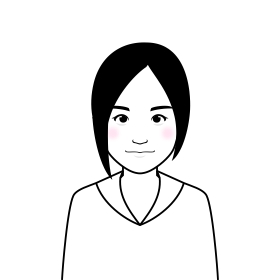USPTOが非自明性についての新審査ガイドラインを施行
2010.09.03

SKIP
KSR事件以降、非自明性について非常に多くの判例が蓄積してきたので、USPTOをそれらの判例の内容を含めた、非自明性についての新しい審査ガイドラインを公表しました。このガイドラインの内容は、9月1日からすでに施行されていますので、今後の審査は、このガイドラインの内容に沿って行われることになります。
USPTOのプレスリリース
但し、非自明性の判断内容を実体的に変更するものではなく、審査官の判断基準の均一性を高めるために、具体的な判決例を沢山例示しながら、KSRで示された基準を示すもののようです。
新ガイドラインの具体的な内容は、ここにあるFederal Registerに記載されています。
具体例が20個以上載っていて、それぞれにTeaching Pointが記載されているので読みやすそうです。
以下、抜粋
Examination Guidelines Update: Developments in the Obviousness Inquiry After KSR v.Teleflex
DATES: Effective Date: This 2010 KSR Guidelines Update is effective September 1, 2010.
Example 4.1. In re Omeprazole Patent Litigation, 536 F.3d 1361 (Fed. Cir. 2008). Teaching point: Even where a general method that could have been applied to make the claimed product was known and within the level of skill of the ordinary artisan, the claim may nevertheless be nonobvious if the problem which had suggested use of the method had been previously unknown. 課題が非公知なら非自明性が認められる場合がある
Example 4.2. Crocs, Inc. v. U.S. International Trade Commission, 598 F.3d 1294 (Fed. Cir. 2010). Teaching point: A claimed combination of prior art elements may be nonobvious where the prior art teaches away from the claimed combination and the combination yields more than predictable results.
阻害要因がある場合、予想外の効果がある場合は非自明性が認められる場合がある
Example 4.3. Sundance, Inc. v. DeMonte Fabricating Ltd., 550 F.3d 1356 (Fed. Cir. 2008). Teaching point: A claimed invention is likely to be obvious if it is a combination of known prior art elements that would reasonably have been expected to maintain their respective properties or functions after they have been combined. 組み合わせによる効果が予想の範囲内である場合、組み合わせが自明になりやすい
Example 4.4. Ecolab, Inc. v. FMC Corp., 569 F.3d 1335 (Fed Cir. 2009). Teaching point: A combination of known elements would have been prima facie obvious if an ordinarily skilled artisan would have recognized an apparent reason to combine those elements and would have known how to do so. 組み合わせる理由があれば組み合わせが自明になりやすい
Example 4.5. Wyers v. Master Lock Co., No. 2009–1412, —F.3d—, 2010 WL 2901839 (Fed. Cir. July 22, 2010). Teaching point: The scope of analogous art is to be construed broadly and includes references that are reasonably pertinent to the problem that the inventor was trying to solve. Common sense may be used to support a legal conclusion of obviousness so long as it is explained with sufficient reasoning. 課題と関連する限り類似文献の範囲は広く捉える
Example 4.6. DePuy Spine, Inc. v. Medtronic Sofamor Danek, Inc., 567 F.3d 1314 (Fed. Cir. 2009). Teaching point: Predictability as discussed in KSR encompasses the expectation that prior art elements are capable of being combined, as well as the expectation that the combination would have worked for its intended purpose. An inference that a claimed combination would not have been obvious is especially strong where the prior art’s teachings undermine the very reason being proffered as to why a person of ordinary skill would have combined the known elements.組み合わせを可能にする理由が、先行技術によって否定されている場合は非自明になりやすい。
Example 4.7. In re ICON Health & Fitness, Inc., 496 F.3d 1374 (Fed. Cir. 2007). Teaching point: When determining whether a reference in a different field of endeavor may be used to support a case of obviousness (i.e., is analogous), it is necessary to consider the problem to be solved. 異なる分野の文献が使えるかどうかは、課題を考慮して決める。
Example 4.8. Agrizap, Inc. v. Woodstream Corp., 520 F.3d 1337 (Fed. Cir. 2008). Teaching point: Analogous art is not limited to references in the field of endeavor of the invention, but also includes references that would have been recognized by those of ordinary skill in the art as useful for applicant’s purpose. 類似技術の範囲は、発明の分野そのものよりももうちょっと広い
Example 4.9. Muniauction, Inc. v. Thomson Corp., 532 F.3d 1318 (Fed. Cir. 2008). Teaching point: Because Internet and Web browser technologies had become commonplace for communicating and displaying information, it would have been obvious to adapt existing processes to incorporate them for those functions. インターネットやブラウザに別の現存技術を組み合わせることは自明
Example 4.10. Aventis Pharma Deutschland v. Lupin Ltd., 499 F.3d 1293 (Fed. Cir. 2007). Teaching point: A chemical compound would have been obvious over a mixture containing that compound as well as other compounds where it was known or the skilled artisan had reason to believe that some desirable property of the mixture was derived in whole or in part from the claimed compound, and separating the claimed compound from the mixture was routine in the art.
混合物中の特定の化合物が優れた効果を有していることが分かっている場合、その化合物を単離することは自明
Example 4.11. Eisai Co. Ltd. v. Dr. Reddy’s Labs., Ltd., 533 F.3d 1353 (Fed. Cir. 2008). Teaching point: A claimed compound would not have been obvious where there was no reason to modify the closest prior art lead compound to obtain the claimed compound and the prior art taught that modifying the lead compound would destroy its advantageous property. Any known compound may serve as a lead compound when there is some reason for starting with that lead compound and modifying it to obtain the claimed compound. 化合物に修飾を加える理由がなく修飾を加えると性能が悪化することを先行技術が教示している場合、修飾を加えた化合物は非自明
Example 4.12. Procter & Gamble Co. v. Teva Pharmaceuticals USA, Inc., 566 F.3d 989 (Fed. Cir. 2009). Teaching point: It is not necessary to select a single compound as a ‘‘lead compound’’ in order to support an obviousness rejection. However, where there was reason to select and modify the lead compound to obtain the claimed compound, but no reasonable expectation of success, the claimed compound would not have been obvious. “reasonable expectation of success”がない場合は非自明
Example 4.13. Altana Pharma AG v. Teva Pharmaceuticals USA, Inc., 566 F.3d 999 (Fed. Cir. 2009). Teaching point: Obviousness of a chemical compound in view of its structural similarity to a prior art compound may be shown by identifying some line of reasoning that would have led one of ordinary skill in the art to select and modify a prior art lead compound in a particular way to produce the claimed compound. It is not necessary for the reasoning to be explicitly found in the prior art of record, nor is it necessary for the prior art to point to only a single lead compound. 自明性を導くために、”lead compound”(糸口となる化合物)を一つに決める必要はない
Example 4.14. In re Kubin, 561 F.3d 1351 (Fed. Cir. 2009). Teaching point: A claimed polynucleotide would have been obvious over the known protein that it encodes where the skilled artisan would have had a reasonable expectation of success in deriving the claimed polynucleotide using standard biochemical techniques, and the skilled artisan would have had a reason to try to isolate the claimed polynucleotide. KSR applies to all technologies, rather than just the ‘‘predictable’’ arts. 蛋白が公知ならそれをコードするポリヌクレオチドも自明になりうる。KSRは全ての技術分野に適用される。
Example 4.15. Takeda Chemical Industries, Ltd. v. Alphapharm Pty., Ltd., 492 F.3d 1350 (Fed. Cir. 2007). Teaching point: A claimed compound would not have been obvious where it was not obvious to try to obtain it from a broad range of compounds, any one of which could have been selected as the lead compound for further investigation, and the prior art taught away from using a particular lead compound, and there was no predictability or reasonable expectation of success in making the particular modifications necessary to transform the lead compound into the claimed compound. 非常に多くの化合物から、ある化合物を選択することが容易でなければ、その化合物は自明でない
Example 4.16. Ortho-McNeil Pharmaceutical, Inc. v. Mylan Labs, Inc., 520 F.3d 1358 (Fed. Cir. 2008). Teaching point: Where the claimed anti- convulsant drug had been discovered somewhat serendipitously in the course of research aimed at finding a new anti- diabetic drug, it would not have been obvious to try to obtain a claimed compound where the prior art did not present a finite and easily traversed number of potential starting compounds, and there was no apparent reason for selecting a particular starting compound from among a number of unpredictable alternatives. 思いがけなく発見した薬は、非自明
Example 4.17. Bayer Schering Pharma A.G. v. Barr Labs., Inc., 575 F.3d 1341 (Fed. Cir. 2009). Teaching point: A claimed compound would have been obvious where it was obvious to try to obtain it from a finite and easily traversed number of options that was narrowed down from a larger set of possibilities by the prior art, and the outcome of obtaining the claimed compound was reasonably predictable. 有限数の化合物からある化合物を選択することが容易であれば、その化合物は自明である
Example 4.18. Sanofi-Synthelabo v. Apotex, Inc., 550 F.3d 1075 (Fed. Cir. 2008). Teaching point: A claimed isolated stereoisomer would not have been obvious where the claimed stereoisomer exhibits unexpectedly strong therapeutic advantages over the prior art racemic mixture without the correspondingly expected toxicity, and the resulting properties of the enantiomers separated from the racemic mixture were unpredictable.光学異性体の一方が優れた活性を有することが予測できなかった場合、そのうちの一方を単離したものは非自明
Example 4.19. Rolls-Royce, PLC v. United Technologies Corp., 603 F.3d 1325 (Fed. Cir. 2010). Teaching point: An obvious to try rationale may be proper when the possible options for solving a problem were known and finite. However, if the possible options were not either known or finite, then an obvious to try rationale cannot be used to support a conclusion of obviousness. Tryする数が有限であれば、”obvious to try”によって自明の結論を導くことは適切
Example 4.20. Perfect Web Technologies, Inc. v. InfoUSA, Inc., 587 F.3d 1324, 1328–29 (Fed. Cir. 2009). Teaching point: Where there were a finite number of identified, predictable solutions and there is no evidence of unexpected results, an obvious to try inquiry may properly lead to a legal conclusion of obviousness. Common sense may be used to support a legal conclusion of obviousness so long as it is explained with sufficient reasoning.Tryする数が有限であれば、”obvious to try”によって自明の結論を導くことは適切
Example 5.1. PharmaStem Therapeutics, Inc. v. Viacell, Inc., 491 F.3d 1342 (Fed. Cir. 2007). Teaching point: Even though all evidence must be considered in an obviousness analysis, evidence of nonobviousness may be outweighed by contradictory evidence in the record or by what is in the specification. Although a reasonable expectation of success is needed to support a case of obviousness, absolute predictability is not required.合理的な成功の期待は必要だが、絶対的な予測性は必要でない。
Example 5.2. In re Sullivan, 498 F.3d 1345 (Fed. Cir. 2007). Teaching point: All evidence, including evidence rebutting a prima facie case of obviousness, must be considered when properly presented. 自明性に対する反論についての全ての証拠の検討が必要である
Example 5.3. Hearing Components, Inc. v. Shure Inc., 600 F.3d 1357 (Fed. Cir. 2010). Teaching point: Evidence that has been properly presented in a timely manner must be considered on the record. Evidence of commercial success is pertinent where a nexus between the success of the product and the claimed invention has been demonstrated. 全ての証拠を考慮する必要がある。商業的成功は、発明に関係している場合、考慮すべきである。
Example 5.4. Asyst Techs., Inc. v. Emtrak, Inc., 544 F.3d 1310 (Fed. Cir. 2008). Teaching point: Evidence of secondary considerations of obviousness such as commercial success and long-felt need may be insufficient to overcome a prima facie case of obviousness if the prima facie case is strong. An argument for nonobviousness based on commercial success or long- felt need is undermined when there is a failure to link the commercial success or long-felt need to a claimed feature that distinguishes over the prior art. 商業的成功や長期の要望の証拠は、”prima facie case”(一応の自明)が強い場合は、非自明の証拠として不十分である。



